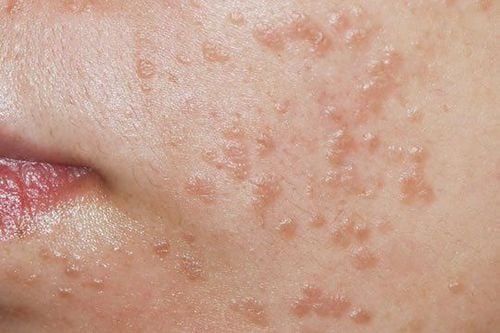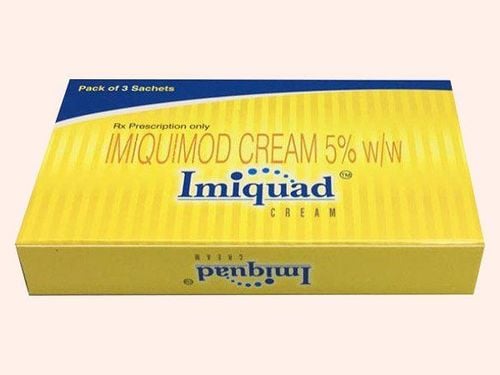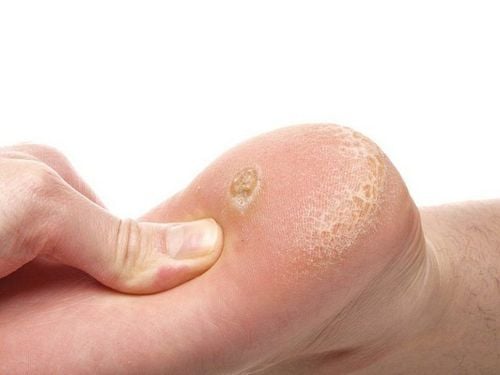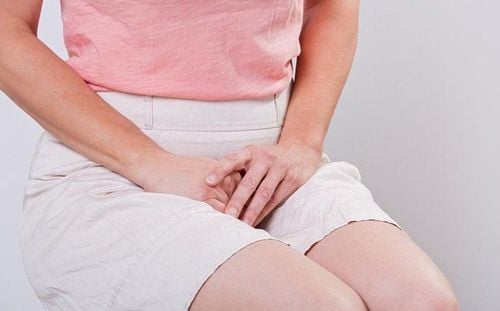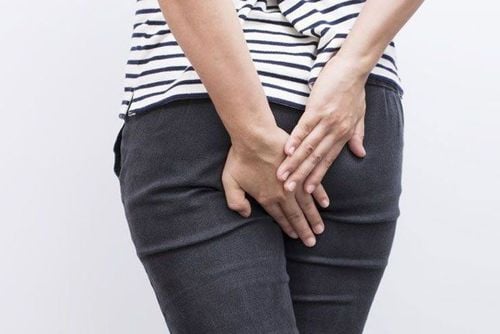This is an automatically translated article.
Warts can enter the body and appear anywhere on the surface of the skin. Recognizing the causes of acne will help you prevent and treat the best pathology.
1. What are warts? Warts, also known as warts, are abnormal skin growths. It often grows into a bumpy pimple, which can appear like a cauliflower in many different places on the body. Acne is white or yellow, brown, gray, ... different sizes but usually equivalent to rice grains.
The causative agent of warts is generally the Human Papilloma Virus (HPV). The virus enters the body through scratches or lesions on the skin. The virus then grows, causing irritation of the surface epithelial cells to proliferate and form rice grains.
2. Causes of common warts Here are the common types of warts and their causes:
2.1. Common warts Common warts are cauliflower-shaped, clearly demarcated, rough, hard, round or irregular margins, 2 - 10mm in diameter, usually appearing on hands, fingers, knuckles hand and elbow. They may appear as a black or dark spot caused by blood clots in a blood vessel. This type of wart is usually caused by the HPV virus 1, 2, 4, 27, 29. Common warts are an infection of the upper layer of the skin that needs to be treated right away to prevent the condition from becoming worse. more serious.
2.2. Plantar Warts Plantar warts are hard, thick patches on the soles of the feet that can be painful when the patient walks. Warts on the feet are usually flat or ingrown to the skin (due to the weight of the body and the pressure placed on the soles of the feet). This type of wart forms when the HPV 1 virus comes into contact with the skin through scratches, cracks, cuts, ...

Các loại mụn cóc có thể xâm nhập vào cơ thể và xuất hiện ở bất kỳ vị trí nào trên bề mặt da
2.3. Papillary warts are usually long, narrow, and located on the face, neck, lips, or eyelids. Among the types of warts, this type of acne is usually asymptomatic, the form is mostly benign and easy to treat.
2.4. Thread-shaped warts are the same color as your skin and usually appear around the neck, nose, shoulders, and under the chin area. People who have received a transplant or are infected with HIV have a higher risk of developing warts because of a weakened immune system.
2.5. Flat warts Flat warts appear as smooth, flat, appearing on the face and neck area. This type of wart is usually yellow, gray, pink or light brown, often appearing in large numbers (20-100 pieces). Flat warts, common in children and adolescents, are caused by HPV 3, 10, 28, and 49. Flat warts can spread quickly on the face from shaving (because they are often located along upper scratches. face). Flat warts usually cause no symptoms but are relatively difficult to treat.
2.6. Genital warts Genital warts - also known as genital warts - are a common symptom of a sexually transmitted disease, caused mainly by HPV 16 and HPV 18. Genital warts look like cauliflower. , is a flat papule, with a smooth or rough surface, growing in the genital area, which can cause pain and discomfort.
2.7. Mosaic Warts Mosaic warts are a group of warts that appear in only a small area. This type of wart usually forms when a thread-shaped wart is left untreated, spreading into a cluster of warts.
2.8. Oral warts Oral warts can appear anywhere in the oral cavity such as lips, tongue, gums,... They can appear as single lesions or grow in clusters, causing discomfort and pain. pain when chewing. Oral warts are caused by the human papillomavirus (HPV) caused by oral sex. The risk of HPV infection is proportional to the number of sexual partners.
2.9. Mosaic Warts Mosaic warts are patches of warts formed by a combination of many small warts on the soles of the feet. They are quite sensitive, causing pain, discomfort when walking.
2.10. Periungual Warts Periungual warts often appear as thickened, cracked, cauliflower-like skin that grows around the nail. They usually have no symptoms, but when the warts spread, they become painful, and the patient often loses the cuticle and is prone to splitting the nail. Periungual warts are common in patients who bite their nails or in occupations where their hands are often exposed to water (dishwashers, bartenders,...).

Mụn cóc quanh móng thường xuất hiện như da dày lên, nứt, giống cây súp lơ mọc quanh móng
3. How to treat warts 3.1 When should warts be treated? Usually, the incubation period of warts is from 1 to 3 months, after which the warts appear in different locations. In about 70% of cases, warts will disappear on their own after 2 years without treatment. About 25% of warts improve on their own after 3-6 months, the remaining 65% can be resolved within 2 years. Sometimes, warts take up to 5 years to clear on their own (especially in areas prone to friction).
Although warts can go away on their own, it greatly affects the patient's aesthetics, activities and confidence. Therefore, in case of recurrent acne or a lot of thickening in a number of different locations, the patient should see a doctor for treatment at the root. Treatment depends on the type of acne, its location, and symptoms. An important thing is that the patient needs to follow the treatment course of the doctor, not arbitrarily give up.
3.2 How to treat warts at home Some tips to treat warts at home include:
Using garlic: The main ingredient in garlic is allicin, which has good antibacterial and antifungal effects. Folks have taken advantage of this property of garlic to remove warts. To treat warts, you just need to crush garlic, take the juice and apply it on the acne spots, leave it for about 2-3 hours and then wash it off with warm water. Persistence in implementation will help you gradually see visible results; Apply perilla leaves: You crush perilla leaves, apply on the acne spots and then use a soft cloth or gauze to fix it well. It is best to apply perilla leaves in the evening to avoid affecting daily life. Should be applied continuously for several weeks, the acne will gradually shrink and fall off by itself; Use green banana peel: You can peel a green banana, rub the inside of the banana peel on the acne (after washing the wart area). You need to keep the banana sap after rubbing the acne. Do it twice a day, after a few weeks you will see the wart gradually disappear; Use Apple Cider Vinegar: The malic acid and lactic acid in vinegar have a corrosive effect on warts. You should apply apple cider vinegar on the warts about 3-4 times a day for faster results; Using aloe vera: You break the aloe vera leaf, leaving the transparent plastic substance on the acne spots. The acid in aloe vera can make the warts fade away. Note: Do not attempt to remove warts on the face or warts in other sensitive areas of the body (eg the genitals) with home remedies.

Có thể dùng tỏi để trị mụn cóc tại nhà
3.3 How to treat warts at the hospital When you go to the doctor, you may be prescribed some methods to treat warts as follows:
Use salicylic acid: Most acne creams, gels and medications Over-the-counter toadstools contain salicylic acid. When using topical medication, pay attention to protect the skin around the acne because salicylic acid can destroy healthy skin. Your doctor will advise you not to use this substance on your face. To increase the effectiveness of treatment, before applying the medicine, you should soak the wart in water for about 5 minutes, use the drug every day for about 3 months; if the skin is painful, stop the treatment; Cryotherapy: The doctor sprays nitrogen on the wart to destroy the cells. For large acne, your doctor will probably need a local anesthetic, spraying nitrogen several times; Surgery: If other wart treatments don't work, your doctor may recommend surgery. In this procedure, the patient is under local anesthesia, and the doctor uses a knife to remove the wart. After surgery, the patient is prescribed a topical cream to completely remove the wart. In addition, the doctor can also use a laser beam to burn off the wart. The article has shared with you the information you need to know about the causes and basic treatment of warts. You need to pay attention to strictly follow the instructions of the doctor during the treatment of warts and prevent the risk of the acne spreading to the surrounding skin or spreading to others.
Please dial HOTLINE for more information or register for an appointment HERE. Download MyVinmec app to make appointments faster and to manage your bookings easily.




